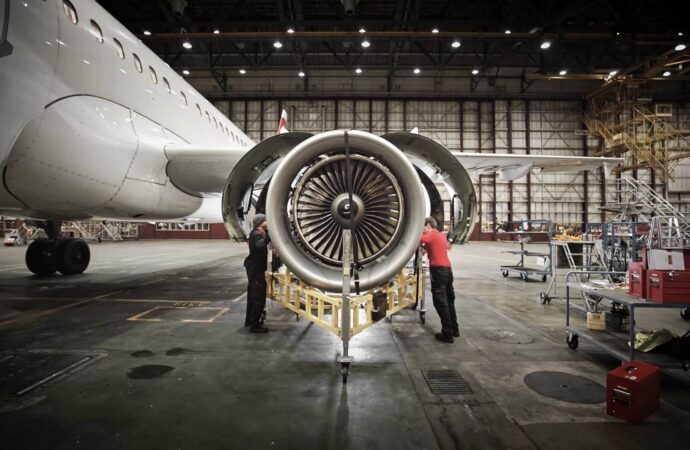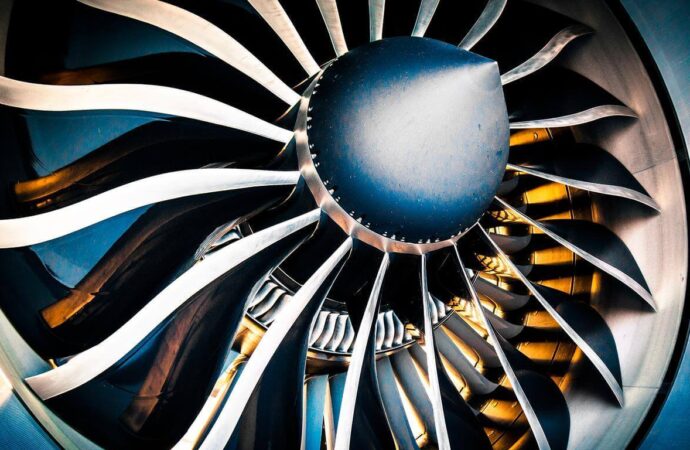The Best ISO Certification Service in Los Angeles, California (CA)
Contact Us

At IQC The ISO Pros, we are a diverse, passionate organization committed to improving your company and offering the best support to your stakeholders. We serve a large range of industries, from start-ups to international companies. We feel that this breadth of experience helps us to be a stronger team and encourages us to have a service that addresses the expectations of many companies that are happy to be our customers. If the organization wants to be ISO certified in Los Angeles, California (CA), we are here for you.
To delight our customers, we’re here. It’s so fast. That’s why when you call us in Los Angeles, California (CA), you’re just as apt to talk to our CEO or Director as you are a member of our sales team. We believe that by working together, we’ll create something totally special.
The cornerstone of all we do is Customer feedback and engagement. We find that what they want while speaking to our customers, is a scalable quality control framework that can help them meet high standards of implementation, compliance, and legislation while also delivering easy, intuitive measures.

About AS9100
AS9100 Revision D is an aerospace industry quality control framework standard. It is based on ISO 9001:2015 and presents additional aerospace-specific specifications. It was originally written in 1999 by the Society of Automotive Engineers, SAE International, and has since been updated from AS9000 to AS 9100. The new release is AS9100D.
The AS9100 is the result of a combined effort by a variety of aerospace organizations, each with its standards or criteria for quality control. The harmonization of their specifications by utilizing ISO 9001 as a framework, with its method methodology focus, prompted the publication of AS9100 and ended an era in which compliance with the different criteria of these organizations was exceedingly difficult.
AS9100D compliance may be accomplished by ISO 9001:2015 compliant or certified companies by introducing specific criteria that go over and above the ISO 9001 standard requirements to maintain product safety and effectiveness. As with other standards, such as ISO 9001 and ISO 14001, registrars conduct validation checks worldwide.
AS9100D Compliance
Under AS9100D, if you want to say that it complies with this standard, the QMS of your company must satisfy all criteria. Each condition is both generic and obligatory and can be omitted only if it cannot be enforced. Also, you should remove or disregard a provision only if it does not impair the capacity or obligation of your company to maintain compliance with its goods and services, and only if you can clarify and describe why it can not be implemented. In brief, it must be enforced if a provision may be introduced.
How you want to satisfy each requirement, though, and to what degree, may rely on several variables and be affected by them. It will rely on the context of your company, its structure, its processes, its priorities, its compliance requirements, and its goods and services, and will be impacted by its threats and possibilities. Consequently, frameworks of quality control can differ quite a bit.

Who will benefit from using AS9100D?
Both internal and external parties can use AS9100D. Both retailer and consumer companies and internal and external auditors may use it. Organizations in the transportation, space, and security industries may use AS9100D and can extend it in the supply chain. It is intended for use by organizations that plan, create, and provide products and services for aviation, space, and defense. It's also among companies that have assistance for post-delivery. This excludes those who supply their goods and services with repairs, components, or replacement parts.
Recipients of aircraft, space, and security goods and services may also use AS9100D. It will be utilized by customers who wish to be informed that their expectations and preferences are regularly fulfilled by the goods and services they receive. It may be utilized by every customer entity across the whole supply chain to develop and sustain an efficient and effective product and service delivery strategy. External auditors as well as global auditors may also use AS9100D to assess the reliability, efficacy, and adequacy of quality control processes and to evaluate the consistency and compliance of any supplier.
Why should I use AS9100D?
Use AS9100D to execute procedures, accomplish targets, satisfy duties, mitigate uncertainties, take advantage of opportunities, and follow all applicable legislative and regulatory criteria. Use it when you are willing to illustrate that the company is reliably able to deliver services and goods that satisfy customer needs and conform with all necessary legislative and regulatory requirements. You ought to be willing to display that the company can boost customer loyalty so it can actively improve both its goods and services as well as its policies and processes. You need to be able to determine the capacity of the company to deliver goods and services reliably that satisfy customer needs and comply with all applicable legislative and regulatory requirements. These are a lot of things to consider but you have IQC The ISO Pros in Los Angeles, California (CA) to assist you every step of the way.
What is AS9101?
AS9101, Audit Standards for Aircraft, Space, and Security Organisations, Quality Control Programs, is a method utilized by the certification body to describe the examination report to be submitted after any audit, certification, or re-certification audit is concluded. This protocol involves a review of all the AS9100 clauses that are reviewed as part of the audit and a scoring mechanism to help evaluate the efficiency of the QMS structures and procedures during the audit. AS9101 Rev F (against AS9100 Rev D) is the latest upgrade, but AS9101 Rev E is also in use for audits of QMS programs that have not yet been updated (until September 15, 2018).
This standard is important since the International Aerospace Quality Community (IAQC) Online Aerospace Supplier Information System (OASIS) database lists any organization that is AS9100 certified. The ranking, determined by an evaluation of the AS9101 checklist, is included in this database and helps customers to measure the discrepancies in the efficacy of the execution of their supplier's AS9100.
What is AS9102?
First article inspection (FAI) is a method that will create a product that satisfies the specifications as expected, to verify your development process. In the U.S. aerospace and defense industry, several companies perform first item inspections using AS9102. Some companies often use checks to verify their manufacturing methods, although they differ in style from business to business to where they are finished in the production phase.
AS9102 is the SAE prerequisite that regulates first articles in the Americas (written by the International Aerospace Standard Community, IAQG). "First article inspection is defined by the AS9102 standard as, "A scheduled, full, autonomous, and recorded inspection and verification method to ensure that the prescribed development processes have created an item that conforms to engineering sketches, DPD, preparation, purchasing order, engineering specifications, and/or other relevant design documentation. (Ref 9102 Rev B, Sec 3.10.) The first inspection report of the journal, 'Forms and packages of component amount, sub-assembly or assembly documentation, including relevant FAI results, as specified by this standard' (Ref 9102 Rev B, Sec 3.11.)
AS9102 specifications
It can seem challenging to grasp the parts of the form one must complete before sending it, given all the specification requirements mentioned in the AS9102 revision and all the various fields that this form includes. This method has already been thought over by the team who created this revision and they have provided three qualifiers to help you understand what is needed.
The first is classified as required and is represented by the letter ‘R.’ in forms. Some of the required fields include part number, part name, name of the company, complete FAI study, signature, and date.
The second is classified as conditionally necessary, symbolized by the ‘CR’ letters. Ascertain procedures are performed or certain devices are utilized, these fields are obligatory. Drawing figures, external method improvements, configuration changes, and specialized tooling are several areas that may be deemed conditionally essential.
The last qualifier noted on the AS9102 is classified as optional, symbolized by the letter ‘O.’ This data is valuable for record-keeping but is not a type completion prerequisite. Examples of optional details involve the name of the individual planning the First Article Inspection, the name of the person authorizing the FAI, the reporting date of the FAI, and the name of the customer approving all of the information.
How can implementing three standards help your QMS?
These three standards will specifically assist you in the execution of your QMS, as you can see above. For either the first article inspection or variance management, whether you need a new method, then AS9102 or AS9103 can instruct you inside your QMS on the best practices for both of these procedures. To determine the efficacy of the QMS programs and procedures, recognizing AS9101 can give you more details about what the certification body is expected to review. This knowledge will offer advice on which areas can also be of concern to you to assess performance. As that is the standard for productivity in the aerospace sector, you will also profit from this.
The key point to note is this: these standards are optional for certain companies. Using certain standards can only be achieved for the good of the company as required by the contracts, mainly because not everyone needs to meet the AS9100 requirements. Use what you like, which is what your QMS is about in the first place, for improved QMS performance and enhancement.
AS9100D comparison to ISO 9001:2015
AS9100 uses the ISO 9001 standard as the system for the specifications and incorporates certain requirements and notes that are unique to the transportation, aerospace, and security sectors. This makes the transition from ISO 9001 to AS9100 easy. It is also possible to incorporate a QMS system that complies with all ISO 9001 and certifies regions of the aerospace industry to AS9100.
ISO 9001:2015 and AS9100 Rev D are all based on the high-level structure of Annex L, which includes a standard basis for all ISO management systems. Annex L aligns the numerous management system standards, matches the sub-clauses, and uses a shared vocabulary, rendering the transition simpler.
Another big advantage of the updated standards is the Plan-Do-Check-Act (PDCA) sequence, which can be extended to all procedures (Clauses 4-10) and the QMS as a whole.
What are the extra criteria as opposed to ISO 9001:2015?
You will notice additional specifications for AS9100 in italics when converting from ISO 9001 to AS9100. There are several fields of additional criteria, although the following are the key distinctions between the two standards:
- Product Preparation – This involves extra criteria for project management, risk management, product configuration management, and task transition monitoring. Danger detection and evaluation were carried out within the specifications of the standard as risk is essential to the aerospace industry.
- Purchasing and Purchased Product – This segment includes a range of additional criteria for supplier management.
- Output and Service Provision – This subject had the most important improvements in AS9100. The explanation is that this is the greatest disparity between one industry and the other. The adjustments shall involve the manufacturing processes as well as the necessary controls on the production facilities and post-delivery assistance.
- Non-compliance – AS9100 provides more detailed requirements for how to manage non-compliance and how to enforce action on procedures and goods, and what disciplinary action can be taken once non-compliance is detected.

FAQ’s
In creating this set of Commonly Asked Questions (FAQs) for updates to the 9100:2016 sequence, the feedback was received from specialists and consumers of the standard from around the world. The list shall be revised and modified frequently to ensure its consistency and, where necessary, to include new queries. This collection is also intended to provide a good source of knowledge for potential users of the standards.
Unique recorded protocols are no longer mentioned; it is the duty of the company to preserve documented records to facilitate the execution of the processes and to keep the documented information required to ensure that the processes are carried out as scheduled. The scope of the documents required would rely on the company’s background. Specifically, a quality manual is no longer needed. The current standard allows the company to preserve the recorded knowledge required for the reliability of the quality management system (QMS). There are several ways to do this, and a quality manual is only one of them. If it is convenient and reasonable for a company to choose to define its quality management system in a quality manual, it is completely permissible. 9100:2016 Standard introduced specifications in clause 4.4.2 that contained the requirements of the previous Quality Manual in addition to new detail. Your company must cooperate whether you have a legislative, regulatory, or customer mandate to retain a quality manual. How have the reporting standards changed?
A quality manual is not specified in the standard, but is it still required?
Background of the AS9101
In case you didn’t realize, the initial edition of AS9101 was first released in the year 2000 with the material first intended to be capable of defining and displaying the evaluation results from companies – initially based on the AS9100:1999 standard. It then began to develop and be upgraded to the new and existing iteration – the Aerospace AS9101F.
Aerospace AS9101 benefits
If you are uncertain as to whether or not to receive certification in Aerospace AS9101, we will easily get you into the benefits. Aerospace AS9101 certification is usually expected for any organization engaged in the production, build, study, service, or repair of a spacecraft or aircraft. Most companies, particularly organizations in the AS&D industry, claim that the AS9101 standard is not an important aspect of their company – they think of it like this, because having an AS9100 certification is like being certified by an agency or a body that tackles overall quality and management auditing in the aerospace industry.
If it comes to certification, the score that a particular agency or entity earns will depend on the checklist of the AS9101.
Benefits include:
- It has laid out standards and a few adjustments to resolve the difficulties that vendors face in supplying goods and services to various customers with differing quality.
- Aerospace AS9101 offers a framework for standardizing aircraft or satellites to be upgraded or operated to international standards.
- It is used internationally in the security, aerospace, and aviation industries. Both of these sectors require accuracy in the outcome. It serves as a warranty for the safety and security of goods in this field.
- It controls the audit phase of the aeronautics and astronautics industries in any possible way. One such approach is to delegate liability to the stakeholders. It helps to identify roles.
- The audit guarantees the execution of protocols and comprehensive maintenance at all stages. It helps to govern by presenting main success metrics linked to the priorities and objectives of the whole process.
- Activities are organized at all stages. The means to achieve the results are established. The technique is being devised.

